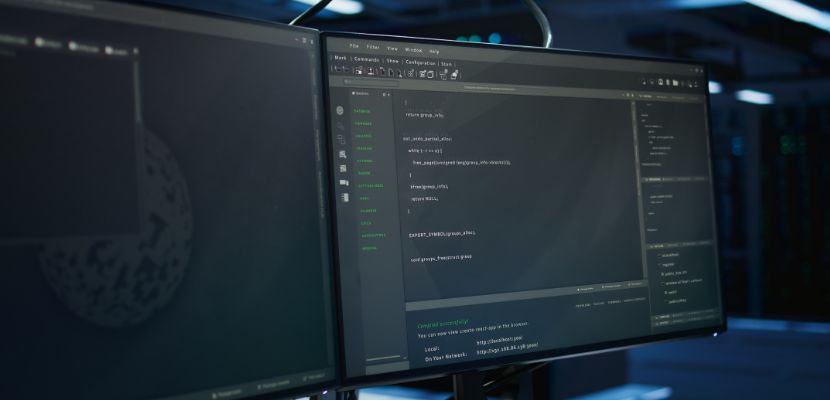Frontend and backend are the two main components of web development.

What Is Frontend Development?
The frontend, often referred to as the client side, is the part of an application that users interact with directly. It encompasses everything from the layout, design, and navigation to interactive elements and real-time updates. Built using technologies like HTML for structure, CSS for styling, and JavaScript for dynamic behavior, the frontend ensures a smooth and engaging user experience across different devices and screen sizes.
What Is Backend Development?
The backend, or server side, is responsible for processing requests, managing databases, handling authentication, and ensuring data integrity. It consists of a server, an application, and a database, working together to execute business logic and provide the necessary data to the frontend. Backend development involves programming languages such as Python, Java, PHP, and Node.js, along with frameworks and tools that optimize performance, security, and scalability.
The backend communicates with the frontend through APIs, ensuring that data flows seamlessly while maintaining security and efficiency. Together, frontend and backend development create a fully functional, responsive, and secure digital experience.
Frontend vs. Backend: What Are the Differences?
Here’s a detailed table comparing frontend and backend development:
| Aspect | Frontend development | Backend development |
| Definition | The part of a website or application that users interact with directly. | The behind-the-scenes infrastructure that processes requests, manages data, and handles logic. |
| Primary function | Manages UI/UX, ensuring a visually appealing and responsive experience. | Handles data storage, security, business logic, and server-side processing. |
| Technologies used | HTML, CSS, JavaScript, and frameworks like React, Angular, and Vue.js. | Programming languages like Python, Java, PHP, Node.js, and frameworks like Django, Spring, and Express. |
| Interaction | Directly interacts with users via browsers or applications. | Communicates with the frontend through APIs and processes data from databases. |
| Data handling | Displays data fetched from the backend and updates UI dynamically. | Stores, retrieves, processes, and secures data using databases and server-side logic. |
| Performance factors | Affects load speed, responsiveness, and accessibility. | Impacts server efficiency, database performance, and request-handling speed. |
| Security concerns | Deals with XSS (Cross-Site Scripting), CSRF (cross-site request forgery), and UI-based vulnerabilities. | Handles authentication, authorization, encryption, and data integrity. |
| Examples of tools | React, Vue.js, Angular, Bootstrap, Tailwind CSS. | Node.js, Django, Flask, Laravel, PostgreSQL, MySQL, MongoDB. |
| Developer role | Focuses on design, interactivity, and user experience. | Focuses on logic, functionality, and data management. |
Which Is Better: Frontend or Backend?
Neither frontend nor backend development is inherently better—each serves a crucial role in building web applications, and their value depends on the context and individual preferences.
Frontend development is ideal for those who enjoy designing user interfaces, working with animations, and enhancing user experience. It requires creativity and an eye for aesthetics, alongside technical skills in HTML, CSS, JavaScript, and various frontend frameworks.
Backend development, on the other hand, is more focused on logic, data management, and server-side functionality. It suits those who prefer problem-solving, optimizing performance, and working with databases, APIs, and server technologies.
Ultimately, the choice between frontend and backend depends on a developer’s interests and career goals. Some may prefer the visual and interactive aspects of frontend, while others may enjoy the structured and analytical nature of backend development. For those who want to work on both, full-stack development offers a balance of both disciplines.
Can I Learn Backend Without Frontend?
Yes, you can learn backend development without learning frontend, but your understanding of web development may be limited. Backend development primarily involves working with servers, databases, APIs, and business logic, so you can focus entirely on backend technologies like Python (Django, Flask), Node.js (Express), Java (Spring Boot), or PHP (Laravel) without dealing with frontend design.
However, having basic knowledge of frontend concepts—such as how HTTP requests work, how data is sent and received via APIs, and how frontend applications consume backend services—can be beneficial. This understanding helps you build and test backend functionality more effectively, even if you don’t specialize in frontend development.
If you aim to work solely as a backend developer, you don’t need to master frontend technologies, but knowing how they interact with the backend will make you a more well-rounded developer.